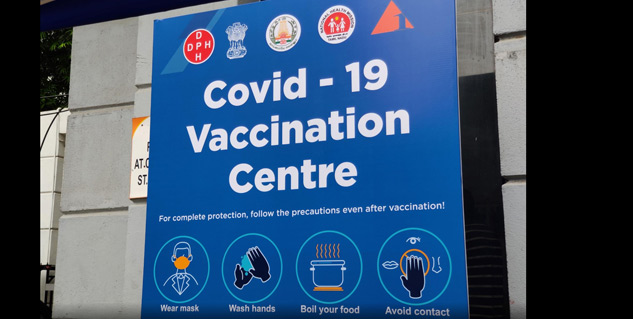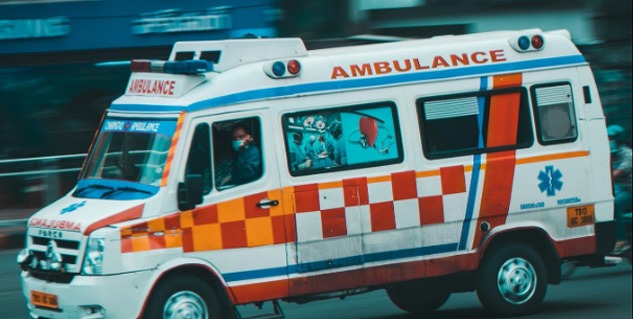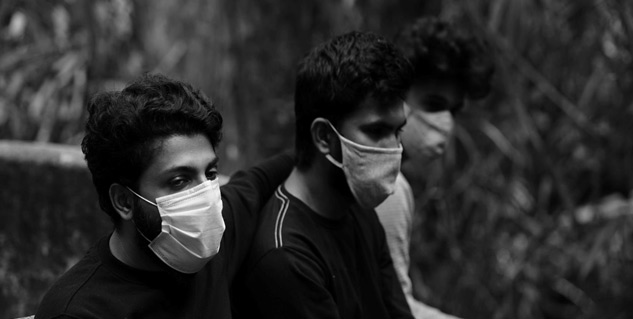
The year 2021 proved to be grim for India as far as the COVID-19 pandemic and its after-effects are concerned. As the ferocious second wave hit in March, the country saw people scrambling for medical oxygen and hospital beds. Hundreds of thousands of cases were recorded per day while thousands perished in a matter of days. This was also the year when India started its mass inoculation drive, but also saw a major shortage of vaccine doses, which forced vaccination centres in several parts of the country to shut.
Table of Content:-
As India saw some respite from June onwards, experts cautioned against an impending third wave. The Delta variant, which experts attribute as the cause for the second wave, wasn’t the only COVID variant the world saw. After Alpha (first identified in England), Beta (first identified in South Africa), and Delta, Omicron, first detected in Africa, was classified as a variant of concern by the World Health Organisation. As we are bidding adieu to this year, let us take a look back and see how the COVID situation panned out in India this year.
India Starts Mass Vaccination Drive Against COVID

(Photo Credit: Unsplash)
As 2021 began, India started inoculating its population against the novel coronavirus.
- January 1: The Drug Controller General of India (DCGI) granted emergency use approval to AstraZeneca-University of Oxford’s vaccine. Dubbed as ‘Covishield’ in India, the vaccine was manufactured at Pune’s Serum Institute of India.
- January 2: A day later, the DCGI also approved the vaccine developed by Hyderabad-based Bharat Biotech in a collaboration with the Indian Council of Medical Research (ICMR). Dubbed as ‘Covaxin’, this is India’s indigenous vaccine.
- January 16: The mass inoculation drive was initiated with frontline workers being inoculated first. Manish Kumar, a sanitation worker, became the first person to be jabbed against COVID-19 in India.
- As of now, India has rolled out three vaccination phases and everyone above the age of 18 is eligible to get jabbed.
- Covishield and Covaxin were the primary vaccines administered in India. But with time, it has approved other vaccines too, such as Sputnik V (developed by Russia’s Gamaleya Research Institute), and those developed by Johnson & Johnson, Moderna, and Zydus Cadila.
As per the latest tally by the Ministry of Health, as many as 1,35,25,36,986 vaccine doses have been administered in India as of December 16, 2021.
Also read: Covid-19: What Are Variant Of Concern (VOC)? Know Everything About These Variants
Vaccine Diplomacy & Shortage
Being among the biggest pharmaceutical producers in the world, India started one-of-its-kind diplomacy. Widely called vaccine diplomacy, the country donated a large number of vaccine doses to neighbouring nations and countries covered under the COVAX initiative of the WHO that aims at equitable access to COVID-19 vaccines for countries across the world.
Although lauded at first, this policy was widely criticised later when the country saw a major shortage of vaccines, due to which several vaccination centres in many parts of the country were forced to shut down. This coincided with the start of the second COVID wave. Hence, to meet its domestic vaccine needs, India eventually banned the exports of COVID vaccines and greenlighted vaccines other than those already approved.
India Hit By An Aggressive Second Wave Of COVID-19

(Photo Credit: Unsplash)
In what exposed to the bone the shortcomings of India’s healthcare infrastructure, the country was hit by a massive second wave of COVID-19.
- This period spanning through late March, April, and May saw a massive shortage of oxygen cylinders, hospital beds, and other medical equipment.
- Although this wave has largely been attributed to the deadly Delta variant (first identified in India in December 2020), electioneering across four states and the large-scale Kumbh Mela celebrations in Haridwar was also blamed for the same.
- People queued outside hospitals, while hospitals made helpless SOS calls over the shortage of medical oxygen. People queuing to get a hand on oxygen cylinders has also been etched forever in the country’s memory.
- During this time, on many days the country recorded over 300,000 cases. Over 414,000 cases have been the highest single-day tally ever recorded in India as well as in the entire world.
- On May 20, India recorded 4,529 COVID deaths, the highest in the country as well as the world over.
- Towards the end of this month, there came some respite as the country started witnessing a drop in the number of daily COVID cases.
Apprehensions Over Third COVID Wave In India

(Photo Credit: Unsplash)
For a country hit this bad by the second wave, apprehensions over an impending third wave were quite natural. Many experts cautioned against letting the guards down, otherwise, the country could witness the third wave as soon as in August. However, as of December, the country hasn’t witnessed such a situation and is witnessing a gradual drop in the number of daily COVID cases. Some experts also opine that COVID has reached some level of endemicity in India. However, many say it’s too soon to say if such a thing has happened.
Omicron Variant
Delta, which brought about the second wave, wasn’t the only variant India, and the world, was hit by.
- Omicron, which was first identified in South Africa in November 2021, was classified as a ‘variant of concern’ by the WHO. With this, it joined Alpha, Beta, and Delta into the list of variants that are thought to have the potential to cause severe illness.
- On December 2, India recorded its first two Omicron cases in Bengaluru, Karnataka.
- As of December 16, India has witnessed over 75 Omicron cases across nine states and the union territories of Delhi and Chandigarh.
- With 32 cases, Maharashtra tops the list of highest Omicron cases in India.
Also read: Omicron Variant Of COVID-19 Symptoms: Here’s What Doctor From South Africa Says
Hence, as far as the COVID-19 pandemic is concerned, the year 2021 was grimmer for India as compared to the rest of the world. This is also a cautionary tale of taking ample precautions to ward off the infection in the first place.
Photo Credit: Unsplash
Also watch this video
How we keep this article up to date:
We work with experts and keep a close eye on the latest in health and wellness. Whenever there is a new research or helpful information, we update our articles with accurate and useful advice.
Current Version